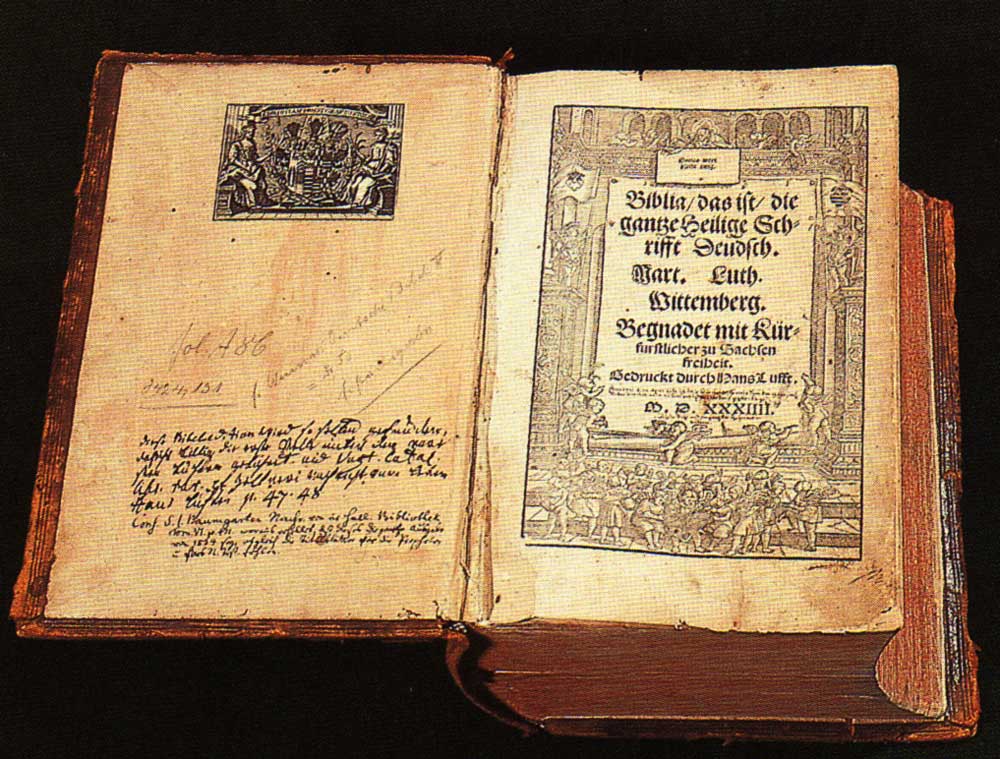Abstract
Martin Luther's German translation of the New Testament was printed
in 1522, and in 1534, his translation of the entire Bible into German
was published in Wittenberg. While Luther is named as its author, other
scholars such as Philip Melanchton collaborated on the translation.
Luther continued to revise the translated text for the rest of his life,
and a completely revised edition was printed in 1541. This image shows
the title page of the 1534 Bible. It reads:
"The Bible, that is the Entire Holy
Scripture [in] German. Mart. Luth. Wittemberg. Favored with
Electoral Freedom in Saxony. Printed by Hans Lufft. 1534." Aided
by the recently invented printing press, Luther's German Bible soon
found distribution across the German-speaking territories. It became not
only a medium for the spread of Protestantism, but also for the
expansion of literacy in sixteenth-century Germany. Written in Early New
High German, the text also represents a milestone in the development of
the modern German language.
